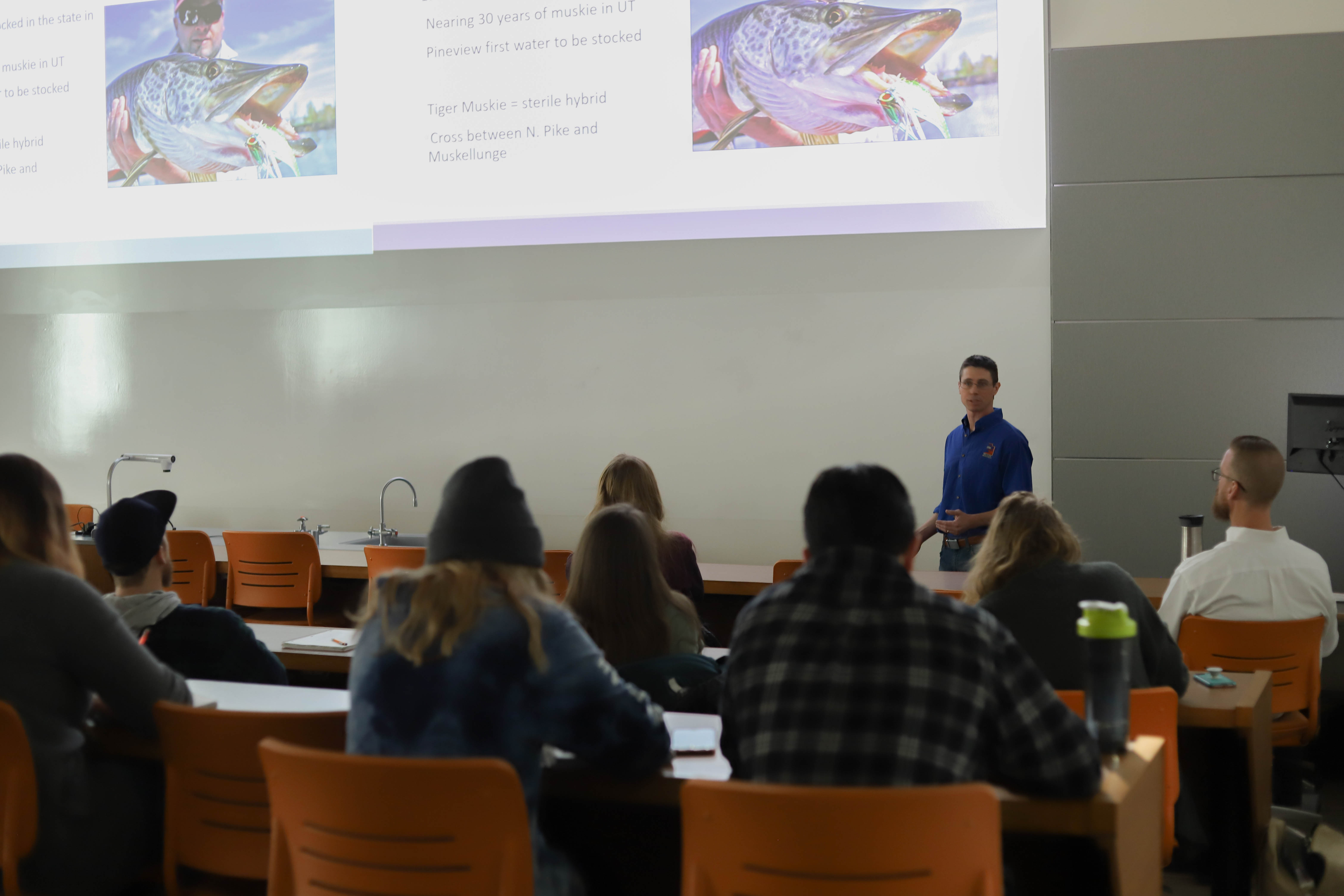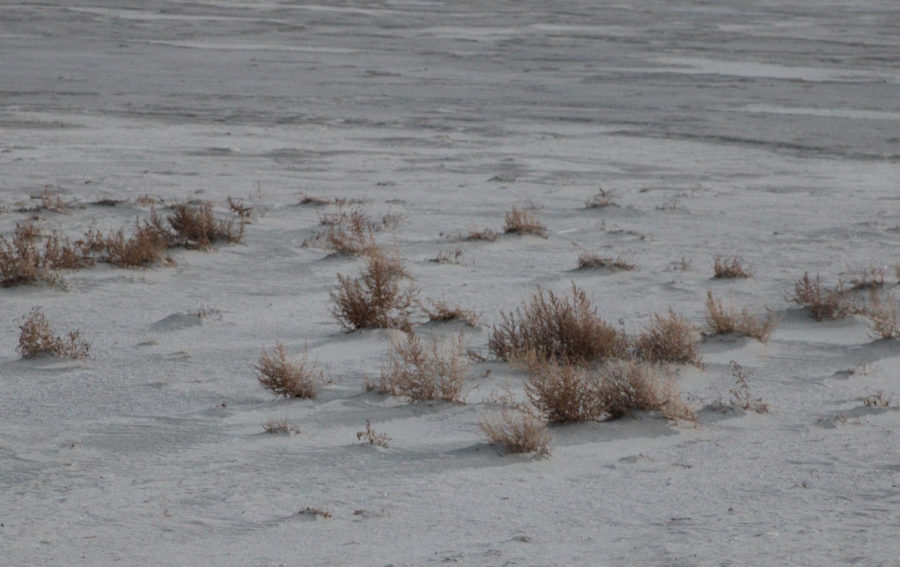Chris Penne, an aquatics biologist for the Utah Division of Wildlife Resources, made a visit to Weber State University on Jan. 29 to discuss the management of tiger muskellunge in Pineview Reservoir.
Penne works with a crew of six other biologists at the Division of Wildlife Resources who are responsible for the conservation of amphibians in seven counties within Northern Utah. During the event, he addressed his new citizen-science project to help promote safe aquatic environments for fish in Utah lakes.
“Chris Penne and his team are essentially trying to help outdoor enthusiasts,” Weber State University Zoology Department Head Christopher Hoagstrom said. “Because of that, now scientists are able to get real data on the elusive tiger muskies.”

The DWR team have kept an eye on fish populations, observed surveys, made habitat improvements and created restoration efforts within the state for several years.
“When we first stocked the fish in Pineview, it was a time when the reservoir was no longer being managed as a trout fishery,” Penne said. “We biologists were trying to continue that, but the writing was on the wall that we could no longer maintain Pineview as a cold water fishery.”
After a series of complications, the team at DWR eventually switched to create a warm water fishery, which meant introducing other species such as bass and black bullheads to the lake.
These populations grew very quickly, therefore creating a need for the tiger muskie to regulate the population as an apex predator.
“The DWR works really hard to keep these native populations happy and healthy. In turn, muskies help keep the carp population down and help keep the other populations healthy,” DWR Technician Aidan Hueton said.
Tiger muskies were first introduced to Utah in 1980. They shortly became a favorite, and have exercised the patience of many expert anglers who refer to them as “the fish of 10,000 casts.”
Although there are incredibly large muskies in the highly recreated Pineview Reservoir — with the largest measuring 49 inches and 33 pounds — the species generally exhibit very shy behavior.
“They are really only out early morning, or late at night. There’s no need to worry about them nibbling on your feet. Once people start recreating, they disappear into the water,” Hueton said.
Since their introduction to Pineview, the species have transformed the reservoir into what is considered the trophy fishery of Utah. Factors contributing to this include warmer temperatures, accessible food, catch and release policies and vegetation for disguise from their predators.
In addition, the species also help bring in revenue to the area, as they can be great sport for fishermen.
The zoology department will hold six more seminars throughout the semester for students who are interested in learning more about Utah wildlife. More information can be found on the zoology department website.
“I think the most beneficial part of Chris’ work is the conservation aspect,” Administrative Specialist for the zoology department Robin Osterhoudt said. “It is important for us to see how the fish are growing and understand the general health of the fish.”



















